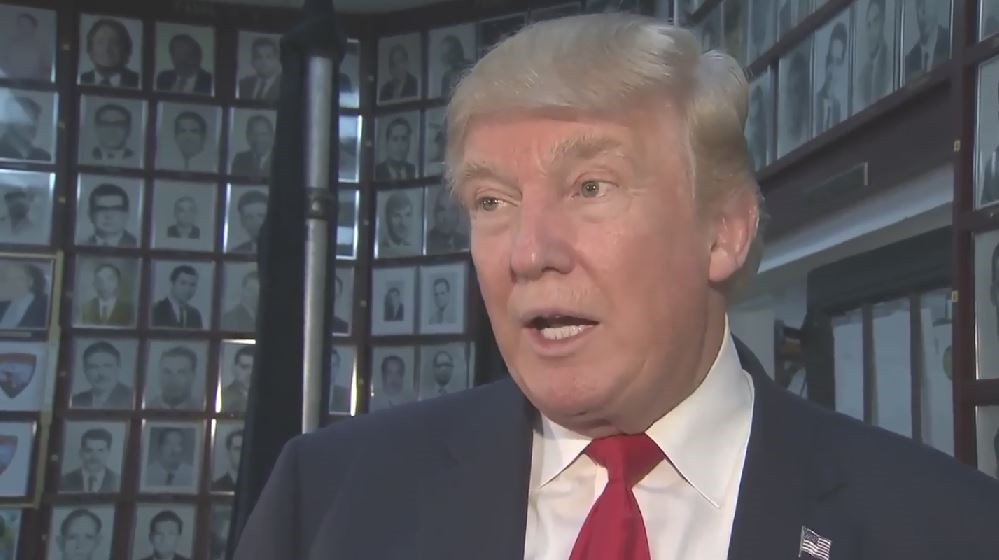
Cuban-Americans and the Trump administration
HAVANA — One of the questions posed by Donald Trump’s victory is whether or not he’ll continue the policy adopted by Obama toward Cuba, and some have already reprised the quaint idea that that question will be decided in Miami. That was never the case, but fewer factors than ever now lead us to consider it.
Although the published figures still don’t allow us to reach definitive conclusions, everything indicates that the Cuban-American vote behaved quite similarly as in the previous elections, when it split about halfway between the Democratic and the Republican candidates.
If this was so, we could say that the Cuban-American vote was not decisive in these presidential elections, as some media state. In fact, Trump lost in South Florida, where the majority of Cuban-Americans concentrate, just as has happened with Republicans for the past many years, even when the support they received from Cuban-American voters was in the majority.
Also, that result does not contradict the reality that the Cuban-American vote has been leaning steadily toward the Democrats. While in 2004 only 22 percent identified with that party, the number doubled in 2012 to reach 44 percent. What happened this year seems to reaffirm this trend.
Not only the electoral indicators confirm these data. Almost all surveys show a similar degree of polarization in the entire community, although it tends to lean toward the Democrats in the sense that the people are younger or that the Cuban immigrants have spent less time in the United States. This portends an inevitable change toward the future, inasmuch as these are the most dynamic demographic sectors in Cuban-American society.
Evidently, U.S. policy toward Cuba is a factor with much weight in this behavior, so having to appeal to the traditional vote of the “historical exile,” with all the worn-out promises — as Trump did when he toured Miami — is more a desperate effort by the Republicans than a viable strategy looking toward the future.
On the other hand, there are no reasons to expect that the lobby created by the Cuban-American far right can revitalize itself with the recent results and achieve an influence that can revert U.S. policy toward Cuba, all the more so when there are more important counterweights among the Republicans themselves that will push in the opposite direction.
In fact, all figures who represent the Cuban-American far right in Congress were re-elected, even though they stood against Trump, which puts into question whatever influence they may have on the administration. The truth is that Trump came to power without any commitment to these people and — given his personal characteristics — he will hardly forgive them for their insults and contempt.
More important still, this lobby has lost much of its economic base. The majority of the more renowned Cuban-American businessmen, no matter whether they are Democrats or Republicans, have expressed themselves in favor of Obama’s policy toward Cuba and did back Hillary Clinton’s candidacy.
Even institutions in the Miami enclave that were deeply rooted in Republican tradition, such as the Latin Builders Association, supported the Democratic candidate.
Beyond hits and misses in the presidential bet, the essence of the problem is that the policy toward Cuba was not the result of a “divine inspiration” by Barack Obama but the consequence of objective factors that determined a specific juncture, which now weighs the same on the Republican president.
The Cuban-American far right cannot revert this situation, simply because it is not strong enough to do it no matter what “reaccommodations” are made, including any partial achievements it may make.
The so-called “moderate” groups that vigorously backed Obama’s new policy toward Cuba and managed to influence it find themselves offsides just the same, and have scant access to the Trump administration.
This does not leave them totally out of the process, since they’ve had an active participation in the creation of bipartisan structures that support the change. These structures may now be strengthened by the weight added to them by the Republican agricultural groups and other sectors of the GOP interested in the Cuban market.
But what’s determinant for the validity and importance of these groups, both for the U.S. and Cuba, is that they could become an alternative for the far right on a local scale and capitalize the emerging Cuban-American vote by virtue of their positions. That’s something they haven’t done so far.
The conclusion this analysis may lead us to is that all the Cuban-American political groups lost in these elections, and that their role in the design and application of U.S. policy toward Cuba has notably diminished.
That was an inexorable trend, related to the loss of specific weight, to the degree that the national interest in the debate increases and other, more powerful groups join that debate, although perhaps the results of the balloting might accelerate the process.
Nevertheless, this does not mean that Cuban-American community has stopped being an important factor in the relations between the two countries, having an impact on both societies. What has changed is the diverse and complex manner in which this influence takes shape.
The loss of the monolithic nature that previously characterized the Cuban-American vote in favor of the Republicans and against U.S. relations with Cuba decreed the inevitable death of the far right. What remains to be seen is how soon the burial will be, no matter who’s president of the United States.
[Photo at top of Donald Trump in Miami on Oct. 25 visiting the Bay of Pigs Museum.]

